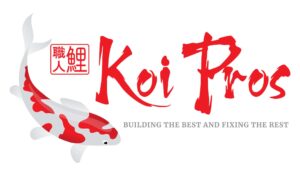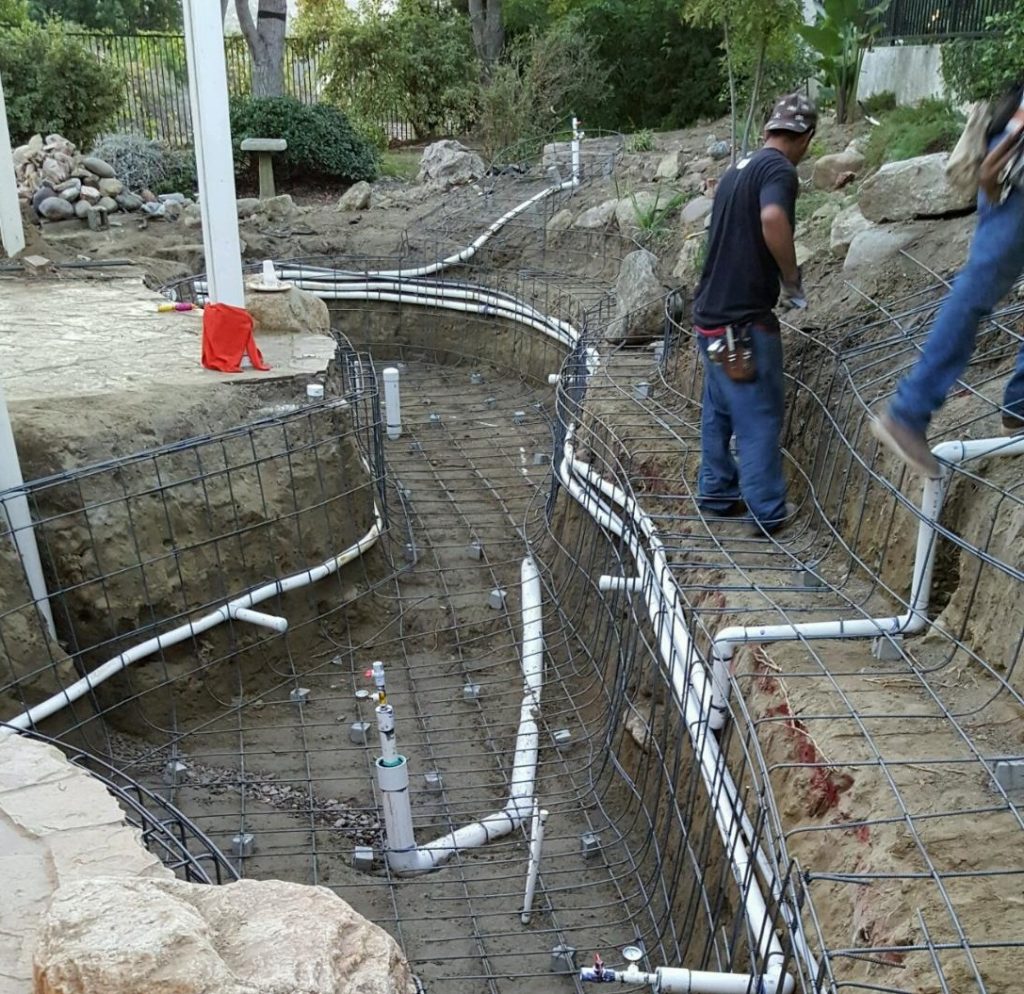
If you’ve ever wanted to turn your backyard into a calm, relaxing space, a koi pond is a great way to do it. Koi ponds add beauty, life, and movement to your outdoor area. But before you start digging, there’s a lot every homeowner should know about koi pond installation. From planning and design to costs and care, this guide will walk you through each step in plain language.
Understanding Koi Pond Installation
What Is a Koi Pond
A koi pond is more than just a water feature. It’s a living system built to keep koi fish healthy and active. Unlike a simple garden pond, a koi pond needs a strong filtration system, enough depth, and proper aeration. These parts keep the water clean and safe for the fish. The goal is to create a space where koi can swim freely, grow well, and live for years.
Why Homeowners Love Koi Ponds
Many homeowners add koi ponds for peace and relaxation. Watching koi swim slowly in clear water can calm your mind after a long day. The gentle sound of water also makes your backyard feel more natural. Besides the look and feel, koi are known symbols of strength, luck, and harmony in many cultures. This makes a koi pond both a visual and emotional upgrade to your home.
Key Elements of a Koi Pond Installation
A good koi pond includes a few main parts — a liner to hold the water, a pump and filtration system to keep it clean, and aeration to provide oxygen. Rocks, plants, and lighting make it look natural and pleasant. Every part has a purpose. For example, filters handle fish waste, while aerators prevent low oxygen that can harm koi. Skipping any of these parts can cause water problems later.
Planning Your Koi Pond Project
Deciding the Purpose and Style of Your Koi Pond
Before building, it’s important to decide what kind of pond you want. Some people want a pond just for decoration, while others plan to raise koi for years. If your main goal is beauty, focus on design and landscaping. If you want to grow healthy koi, focus more on water quality and pond depth. You can also choose between natural ponds with curves and rocks or formal ones with straight edges and clean lines.
Choosing the Right Location for Installation
The location of your koi pond affects everything — water quality, algae growth, and maintenance. Pick a spot that gets about four to six hours of sunlight daily. Too much sun can cause algae to grow fast. Avoid placing the pond under trees because falling leaves can clog filters. Make sure the ground is not too low or uneven, so rainwater doesn’t flood the pond.
Determining Pond Size and Depth
Koi need space to swim and grow. A pond that’s at least three feet deep is ideal. Deeper ponds help control water temperature and protect koi from predators. The number of koi you plan to keep also matters. Overcrowding causes stress and poor water quality. It’s better to start with a few fish and add more later.
Understanding Local Regulations and Permits
Before starting the project, check with your city or local authorities. Some places need permits for digging, electrical connections, or running water pumps. A licensed koi pond contractor can guide you through local rules and safety standards.
Koi Pond Design and Construction Basics
Koi Pond Design Options
There are many ways to design a koi pond. You can go for a natural look with rocks and plants or a modern pond with clean edges and smooth surfaces. Materials also vary. Some ponds use rubber liners for flexibility, while others are built from concrete for durability. Your space, budget, and maintenance preference will guide your design.
Selecting the Right Liner
The liner is what keeps the water inside the pond. The most common liner types are EPDM rubber, PVC, and concrete. EPDM rubber is flexible and lasts long. PVC is cheaper but less durable. Concrete is strong but costs more and takes longer to install. Make sure the liner is installed properly so it doesn’t leak later.
Filtration and Aeration Systems
Clean water is the most important part of a koi pond. A filtration system removes waste and keeps the water clear. Biological filters help grow good bacteria that break down toxins. Mechanical filters trap debris and dirt. Aeration systems, such as air pumps or waterfalls, add oxygen to the water. This keeps koi active and prevents algae growth.
Water Circulation and Pumps
Water pumps move water through the filters and back into the pond. Proper water movement keeps the pond healthy. A pump that’s too weak won’t circulate water properly. A pump that’s too strong may stress the koi. Choose one that matches your pond’s size and depth.
Adding Waterfalls and Fountains
Waterfalls and fountains do more than look nice. They help oxygenate the water and reduce algae growth. They also create a pleasant sound that makes your garden feel peaceful. However, these features can raise your koi pond installation cost slightly because they require extra equipment.
Koi Pond Installation Process
Step 1: Site Preparation
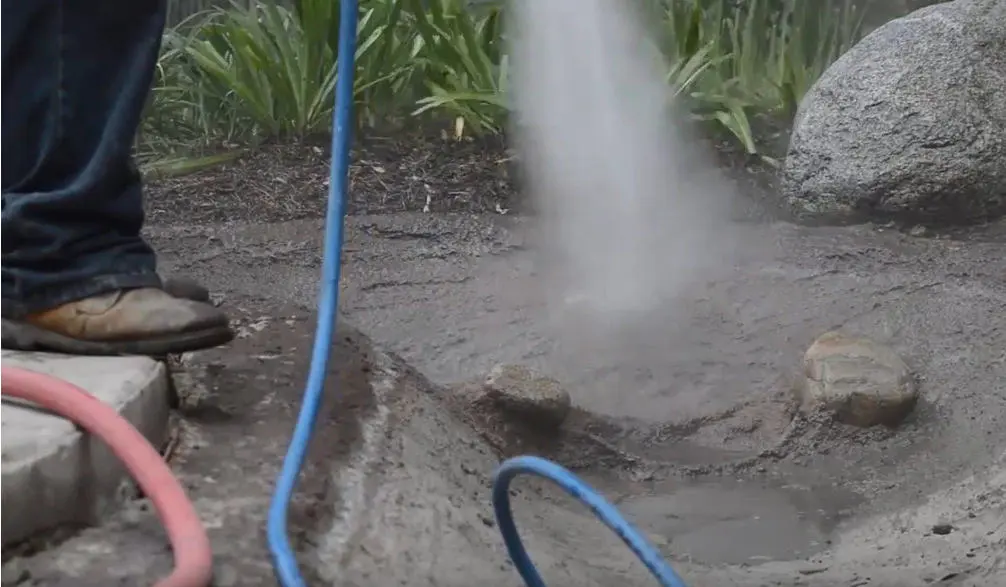
The first step is marking where the pond will go. After that, the area is dug to the right depth and shape. Make sure the pond bottom slopes slightly toward the drain for easier cleaning. Remove sharp stones or roots that could damage the liner.
Step 2: Installing the Liner and Plumbing

Once the hole is ready, the liner is spread out carefully. Pipes for water flow and filters are installed before filling the pond. A professional koi pond builder will make sure everything fits well and won’t leak.
Step 3: Installing the Pump and Filtration System
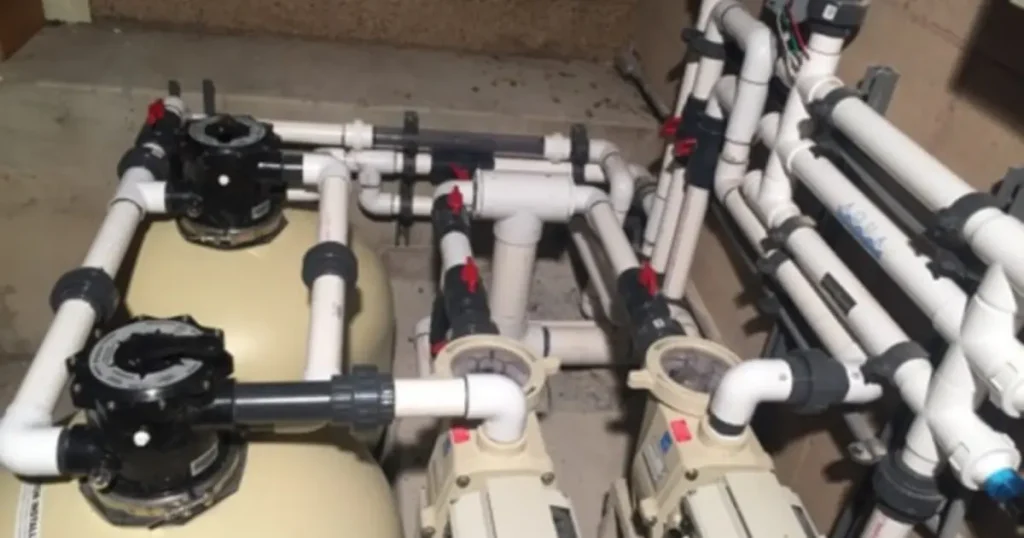
Next comes the filtration setup. The pump connects to the filters and returns clean water to the pond. The system must run continuously to keep water balanced.
Step 4: Filling the Pond and Balancing the Water
After the setup is done, the pond is filled with water. Tap water usually contains chlorine, so it must be treated before adding koi. The water’s pH and temperature should also be tested and balanced.
Step 5: Adding Rocks, Plants, and Finishing Touches
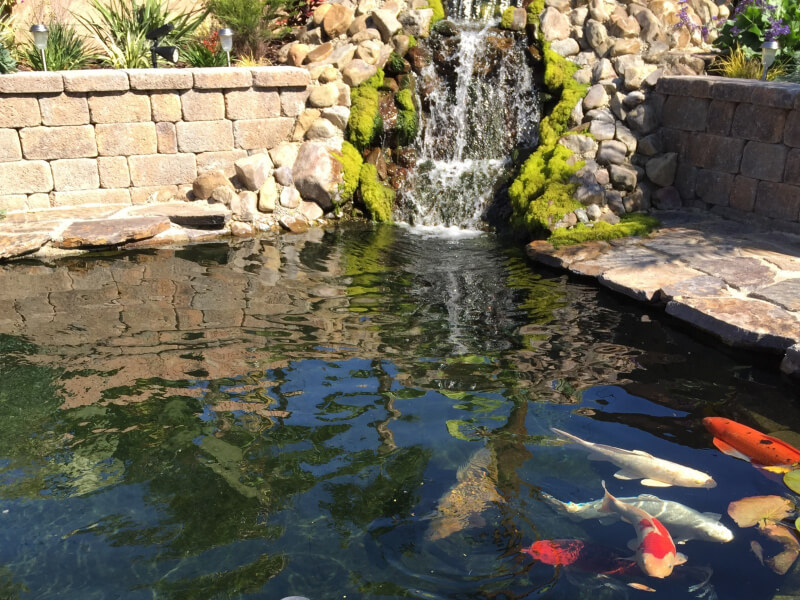
Once the pond is filled, add decorative stones, aquatic plants, and lighting. These make the pond look natural and help with water quality by providing shade and oxygen.
Step 6: Introducing Koi Fish
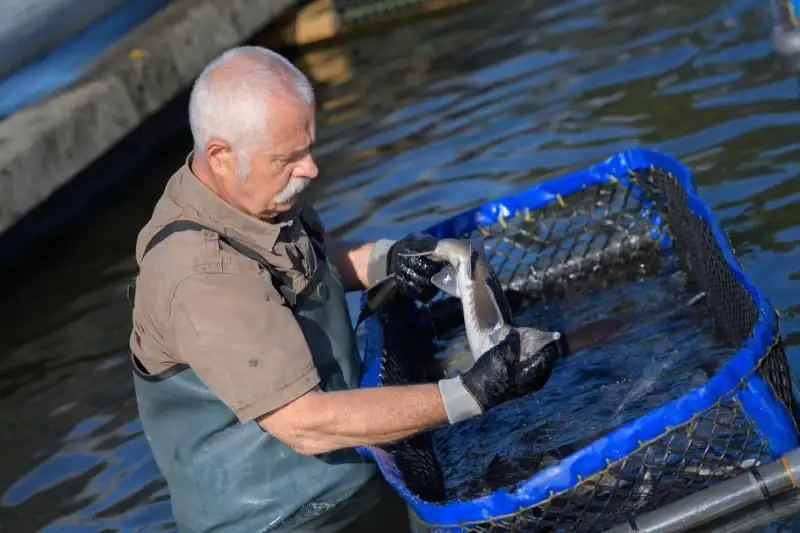
Never add koi fish right after filling the pond. Wait a few days for the water to stabilize. Start with a few healthy koi and slowly increase their number as the pond ecosystem balances out.
Koi Pond Installation Cost Breakdown
Factors That Affect Koi Pond Installation Cost
Several factors affect cost. The pond’s size, depth, materials, and design all make a difference. The more complex the pond, the higher the price. Extras like waterfalls, lighting, and filtration systems add to the total. Your location also matters, as labor costs vary by region.
Average Koi Pond Installation Cost Range
On average, a small koi pond may cost between $3,000 and $6,000. Larger ponds with high-end filtration and custom design can go beyond $10,000. A koi pond contractor will provide an exact quote after seeing your yard and discussing your design choices.
DIY Koi Pond vs. Hiring a Contractor
Some homeowners try building their own ponds to save money. However, without proper knowledge, DIY ponds can develop leaks, poor water circulation, or fish health problems. Hiring a professional contractor might cost more upfront but saves money in the long run through proper design and fewer repairs.
Working with a Koi Pond Contractor
When to Hire a Professional
If your project involves complex designs, deep digging, or electrical wiring, it’s best to hire a professional. Contractors understand the technical side — from water flow to pump sizing — and make sure the pond runs well year-round.
How to Choose the Right Koi Pond Contractor
Look for contractors who have experience with koi ponds, not just garden ponds. Ask for pictures of previous projects and customer reviews. A good contractor should be licensed, insured, and willing to explain every step.
Questions to Ask Before Installation
Ask about the type of liner, filters, and materials they plan to use. Discuss timelines, warranties, and maintenance services. This helps you understand what you’re paying for and ensures no surprises later.
Understanding the Installation Agreement
Always get a written contract. It should list costs, materials, schedules, and warranty terms. This protects both you and the contractor if something goes wrong.
Maintaining Your Koi Pond
Routine Maintenance Tasks
Keeping your koi pond clean doesn’t have to be hard. Regularly remove debris, clean the filters, and check the pump. Top up the water when it evaporates. Small weekly tasks prevent bigger problems later.
Managing Water Quality
Healthy water means healthy koi. Test the water weekly for pH, ammonia, and nitrate levels. Use dechlorinators and bacteria starters to keep it stable. Cloudy or green water usually means the filter needs cleaning or more aeration.
Feeding and Caring for Koi Fish
Feed koi once or twice a day with quality food. Avoid overfeeding since uneaten food affects water quality. During winter, koi eat less as the temperature drops. Always remove leftover food after feeding.
Seasonal Pond Care
Each season brings new challenges. In spring, clean the pond and check equipment. In summer, control algae and ensure enough oxygen. In autumn, remove falling leaves. In winter, use a de-icer or aerator to prevent the pond from freezing completely.
Common Problems with Koi Pond Installation
Water Leaks and Liner Damage
Leaks are common if the liner is not installed correctly. Watch for wet spots around the pond. Fix small leaks early before they worsen.
Green Water or Algae Growth
Algae appear when water gets too much sunlight or nutrients. Adding plants and improving filtration can help control it.
Poor Water Circulation
If parts of the pond are still or smell bad, the pump might be too weak or clogged. Clean and adjust the system as needed.
Unhealthy Koi Fish
Stressed or sick koi usually swim near the surface or act sluggish. Poor water quality is often the cause. Check your filter, oxygen levels, and feeding habits.
Enhancing Your Backyard with a Koi Pond
Landscaping Around the Pond
Plants, stones, and small bridges make your pond area more inviting. Choose native plants that don’t need much care.
Adding Lighting and Seating Areas
Soft lighting makes the pond safe and beautiful at night. Add benches or a small deck for a comfortable viewing spot.
Combining a Koi Pond with Other Water Features
A koi pond can connect with a waterfall or stream for a more natural flow. These features improve water movement and visual appeal.
Frequently Asked Questions
How deep should a koi pond be
At least three feet deep to protect koi from predators and temperature changes.
Can koi live in small ponds
Yes, but only a few fish. Overcrowding affects their health.
Do koi ponds attract mosquitoes
No, as long as the water keeps moving with pumps or aerators.
How long does koi pond installation take
Usually one to three weeks, depending on size and weather.
Can I build a koi pond myself
Yes, but a professional contractor ensures proper design and water balance.
How much maintenance does a koi pond need
Basic cleaning weekly and deeper maintenance every few months.
Can I add plants to my koi pond
Yes. Plants help filter water and give koi shade.
Conclusion: Bringing Your Dream Koi Pond to Life
A koi pond can turn any backyard into a calm, living space. It’s not just decoration — it’s a balanced system that supports life and relaxation. With proper planning, quality materials, and regular care, your pond can last for many years.
If you’re ready to start your project, reach out to a professional koi pond contractor. Koi Pros specializes in designing, installing, and maintaining koi ponds and backyard water gardens. Their team ensures your pond fits your space, budget, and goals.
Your dream koi pond is only a plan away. Contact Koi Pros at (714) 613-0123 today and start enjoying peaceful mornings beside your own backyard oasis.
